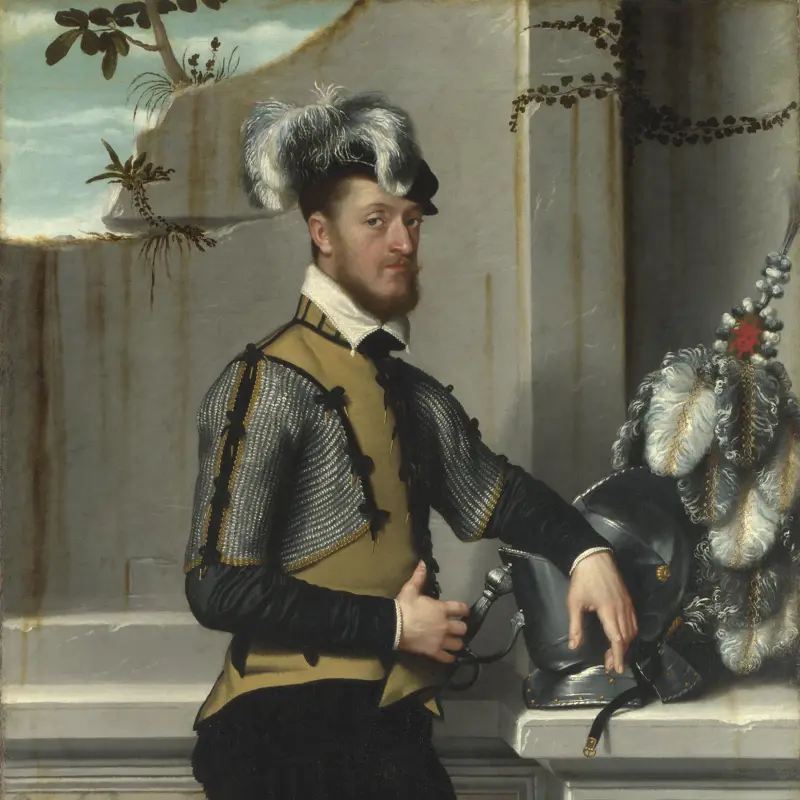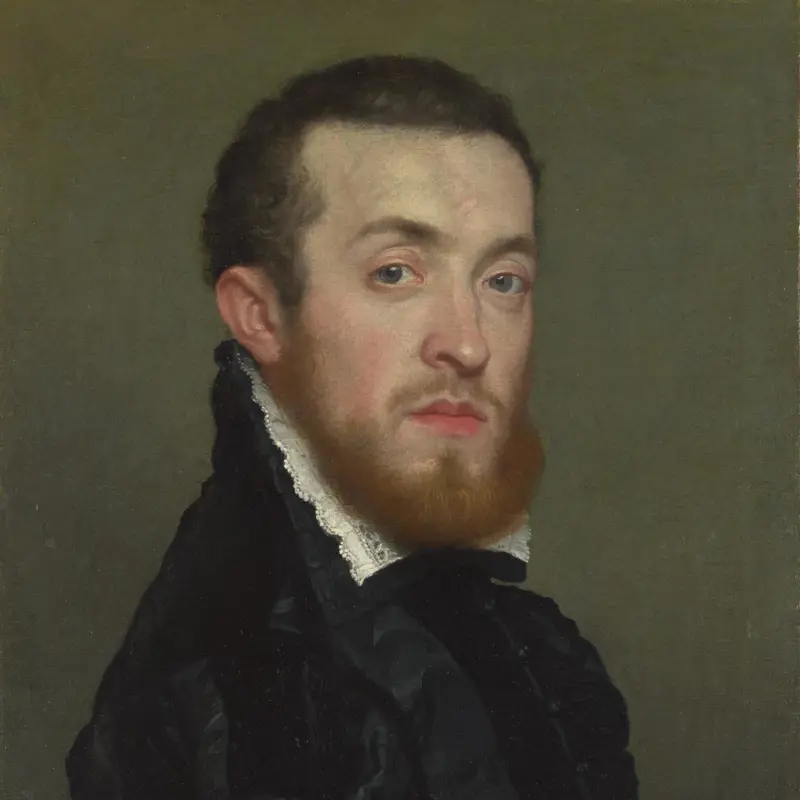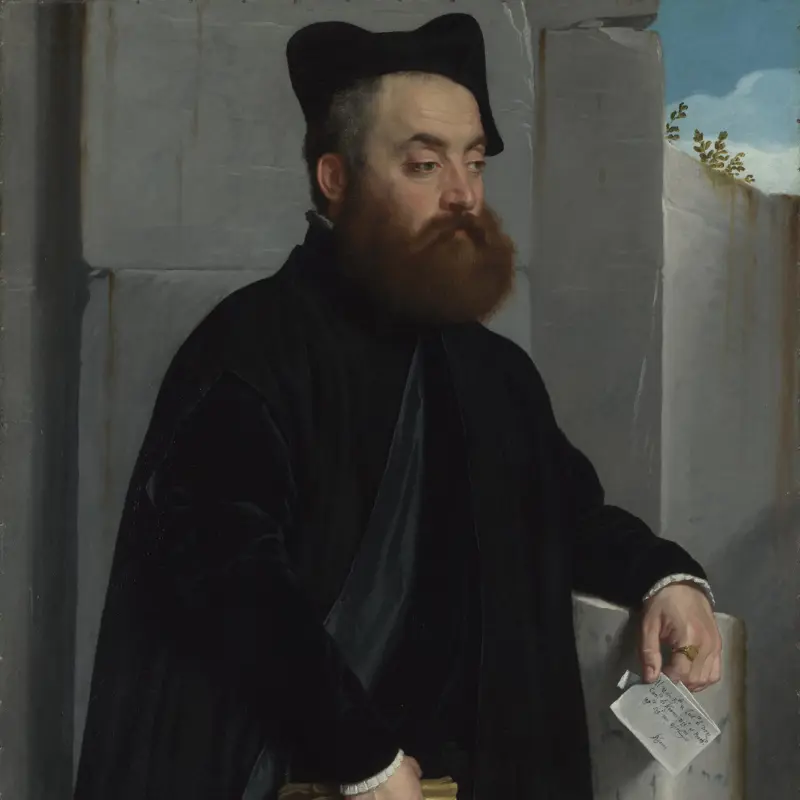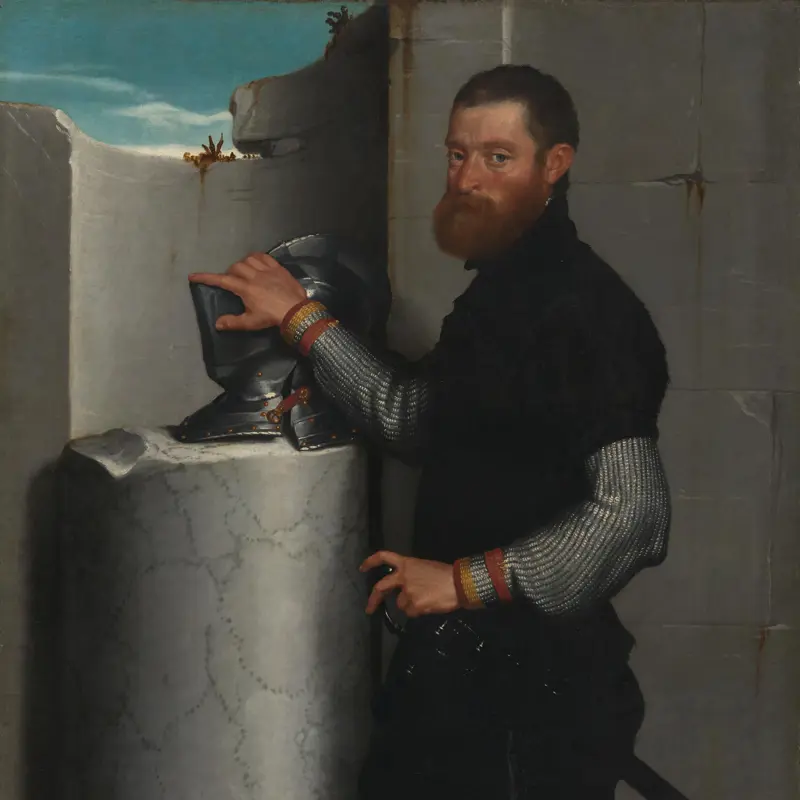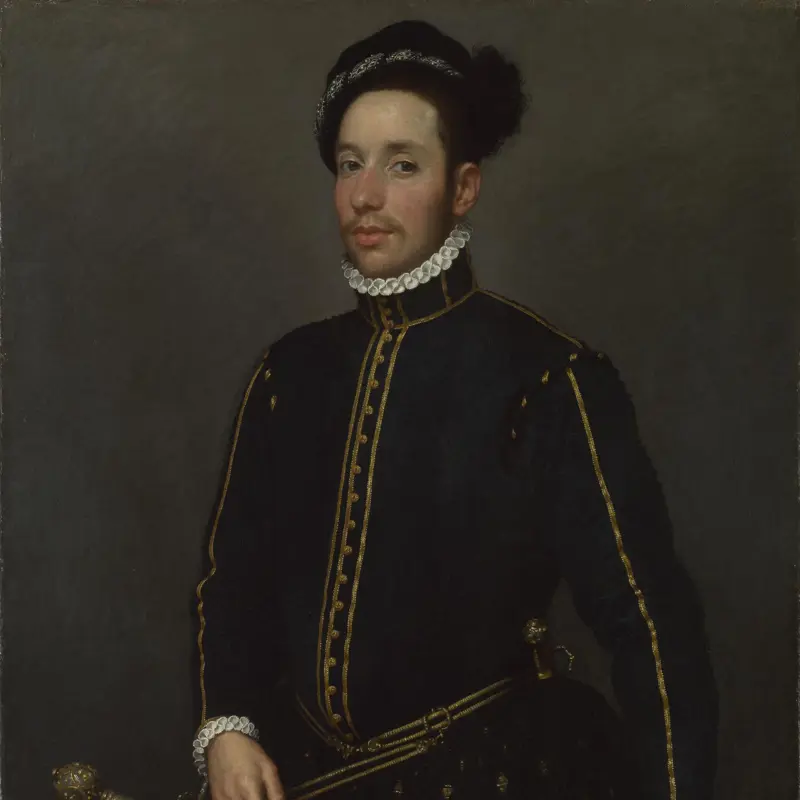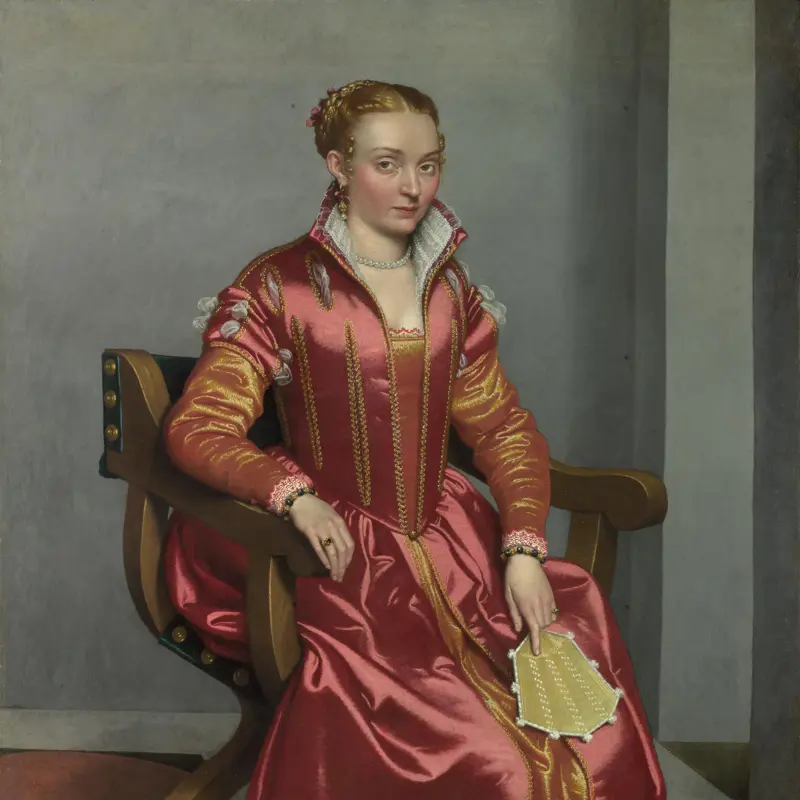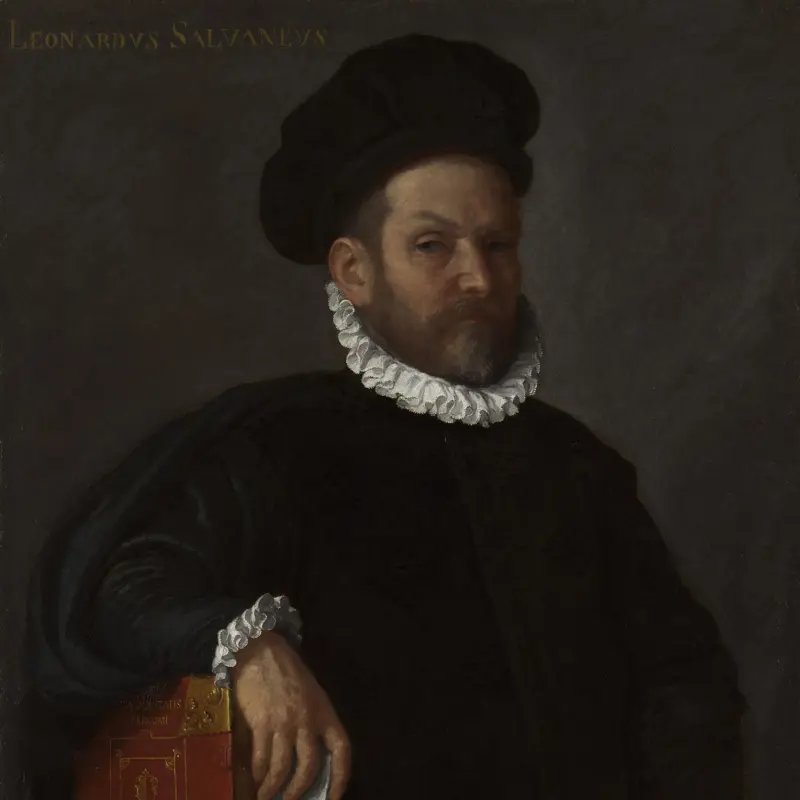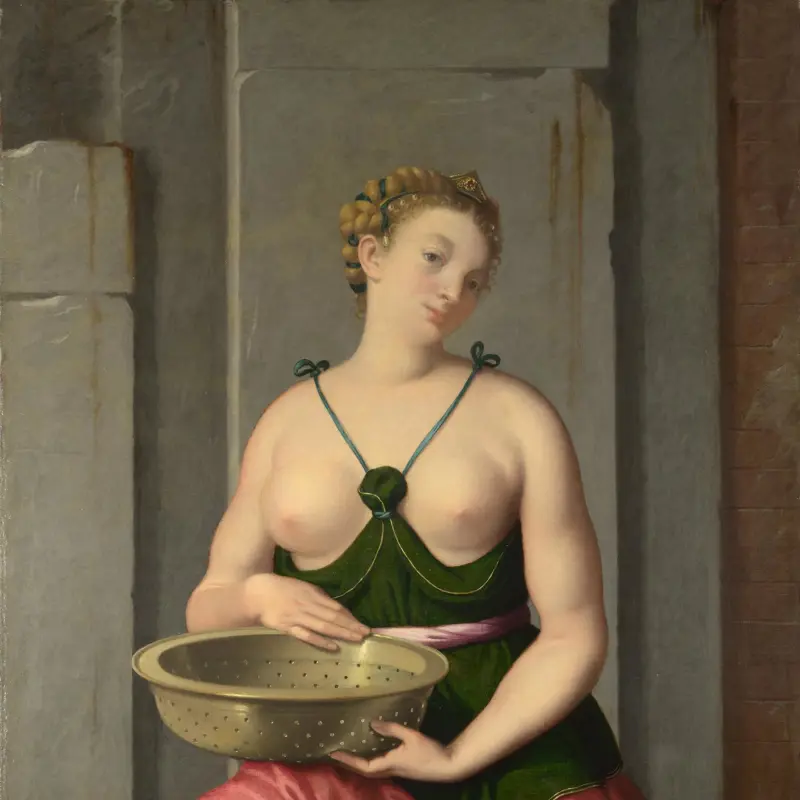Giovanni Battista Moroni, 'Portrait of a Man holding a Letter ('L'Avvocato')', about 1570
About the work
Overview
This portrait has long been known as ‘L’Avvocato‘, meaning the lawyer or counsel in Italian. The sitter’s air of well-paid theatricality and his supercilious regard, as though he is summing up evidence, may have suggested this title. It might also derive from a misreading of the folded letter in his hand which is addressed ’Al Magº Sig Julii‘ (’to the most worshipful Lord Giulio or Giuliano').
The portrait is one of Moroni’s most expressive works. It relies on the hands as well as the head for its effect, and also on the way in which the composition is structured – along a diagonal that runs from the upper right to lower left corner of the picture. The use of a diagonal and the extremely subtle gradation of the grey background is characteristic of the artist’s later work. The trim of the beard and the costume suggest a date of around 1570.
Key facts
Details
- Full title
- Portrait of a Man holding a Letter ('L'Avvocato')
- Artist
- Giovanni Battista Moroni
- Artist dates
- 1520/4 - 1579
- Date made
- About 1570
- Medium and support
- Oil on canvas
- Dimensions
- 89 × 72.5 cm
- Inscription summary
- Inscribed
- Acquisition credit
- Bought, 1865
- Inventory number
- NG742
- Location
- Room 4
- Collection
- Main Collection
- Frame
- 18th-century English Frame
Provenance
Additional information
Text extracted from the ‘Provenance’ section of the catalogue entry in Nicholas Penny, ‘National Gallery Catalogues: The Sixteenth Century Italian Paintings’, vol. 1, ‘Paintings from Bergamo, Brescia and Cremona’, London 2004; for further information, see the full catalogue entry.
Exhibition history
-
2012In Pursuit of Art: Charles Eastlake’s Journey from Plymouth to the National GalleryPlymouth City Museum and Art Gallery22 September 2012 - 15 December 2012
-
2018Loan to the Pinacoteca di Brera (2018 - 2019)Pinacoteca di Brera5 November 2018 - 10 February 2019
Bibliography
-
1962Gould, Cecil, National Gallery Catalogues: The Sixteenth Century Italian Schools (excluding the Venetian), London 1962
-
1987Gould, Cecil, National Gallery Catalogues: The Sixteenth Century Italian Schools, London 1987
-
2001
C. Baker and T. Henry, The National Gallery: Complete Illustrated Catalogue, London 2001
-
2004
Penny, Nicholas, National Gallery Catalogues: The Sixteenth Century Italian Paintings, 1, Paintings from Bergamo, Brescia and Cremona, London 2004
About this record
If you know more about this work or have spotted an error, please contact us. Please note that exhibition histories are listed from 2009 onwards. Bibliographies may not be complete; more comprehensive information is available in the National Gallery Library.

